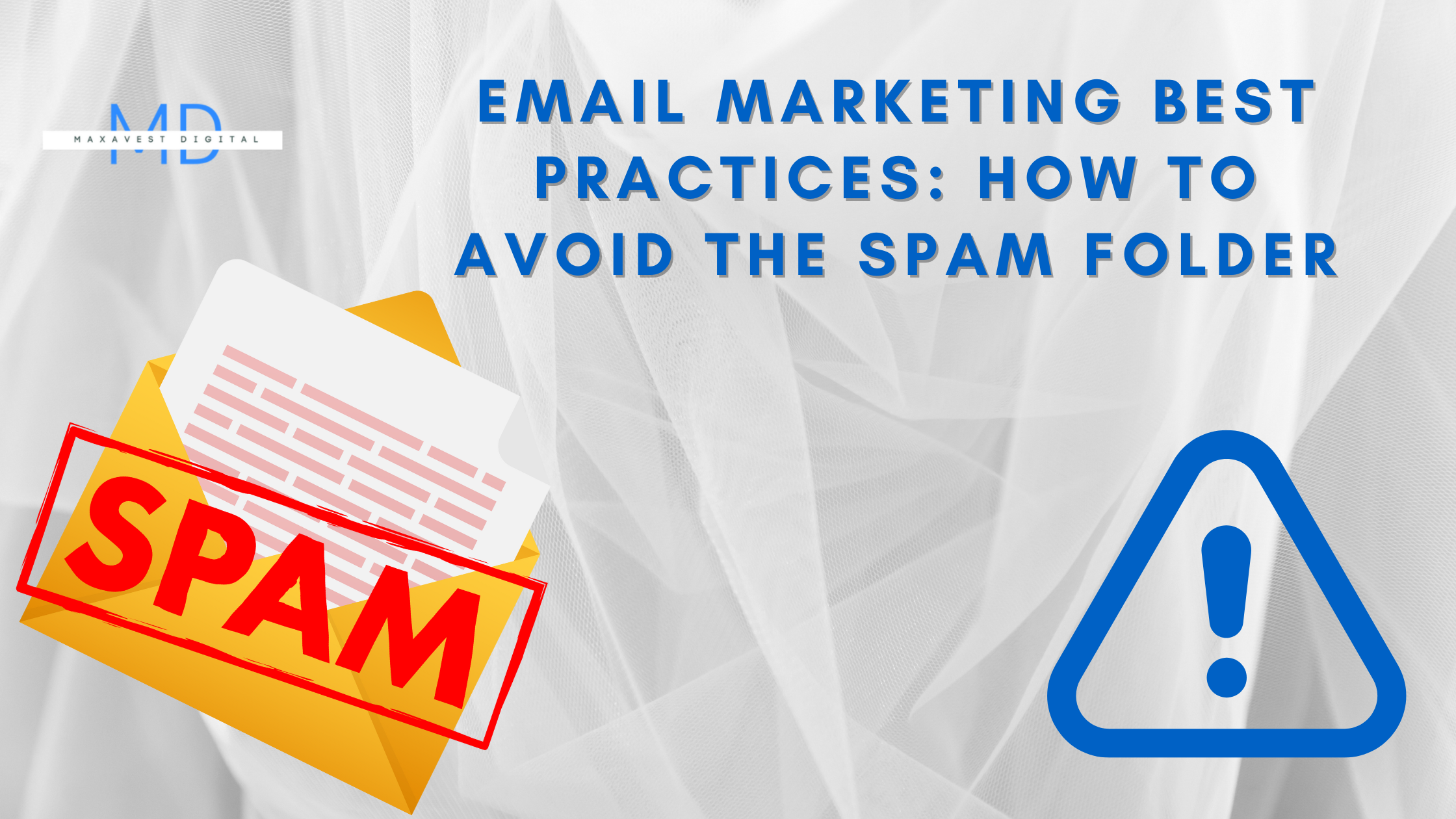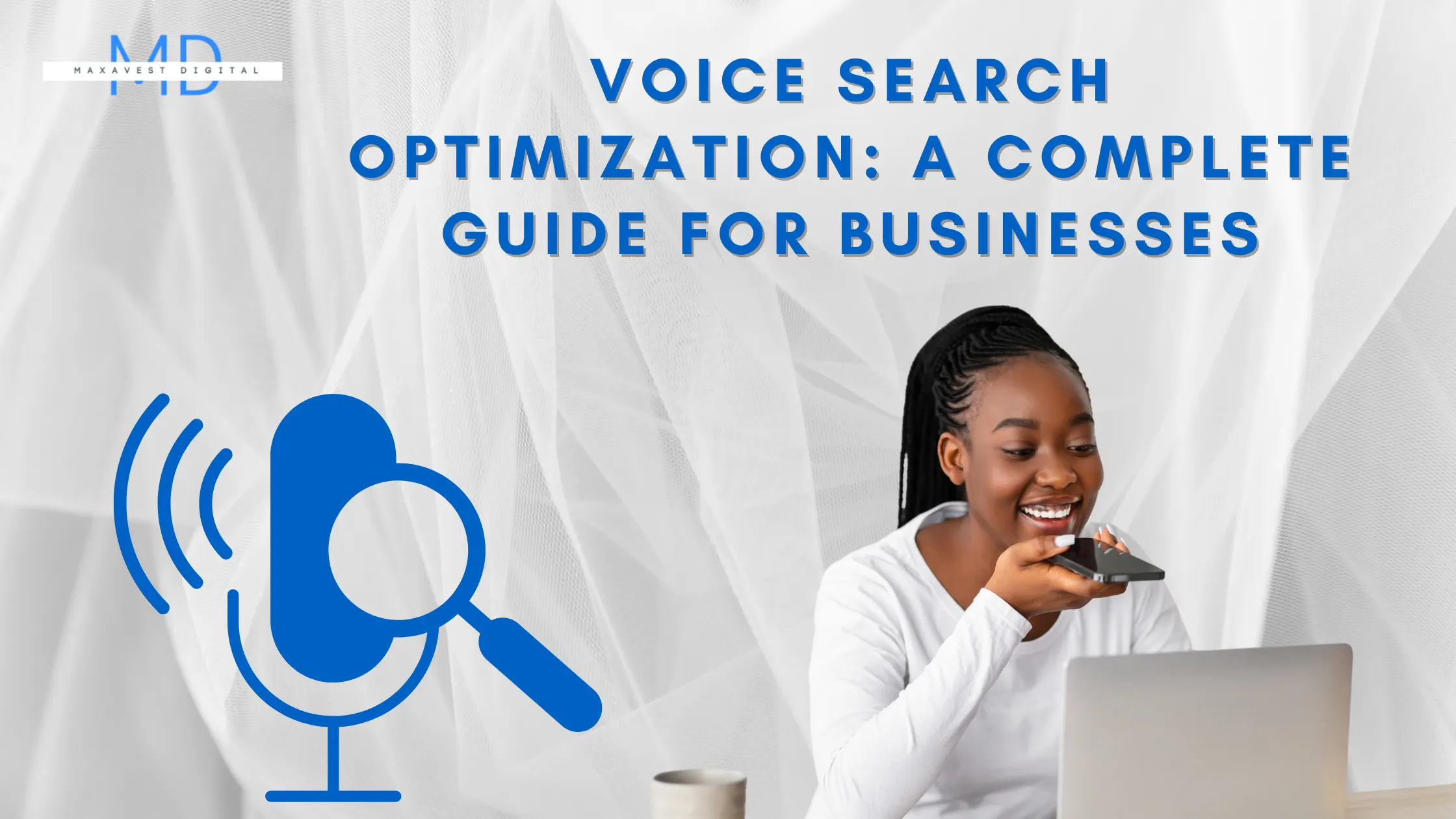Email Marketing Best Practices – How to Avoid the Spam Folder

Introduction
Email marketing has long been one of the most powerful tools in a marketer’s arsenal. But as inboxes become increasingly crowded, the challenge isn’t just crafting compelling content – it’s making sure that content actually reaches your audience. Deliverability, in this case, becomes paramount. No matter how brilliant your email is, it holds no value if it lands in the dreaded spam folder. To stay ahead, understanding the nuances of how email marketing works – and how to avoid being flagged as spam – is critical to your campaign's success.
The Importance of Deliverability in Email Marketing
Deliverability is the measure of how many of your emails actually make it into your recipient's inbox, and it’s not something you can take for granted. A poor deliverability rate can cripple even the most well-intentioned campaign. With email algorithms constantly evolving, ensuring high deliverability is both an art and a science. If you fail to prioritize it, you risk losing not only visibility but also the trust of your audience.
Why Emails End Up in the Spam Folder
It’s easy to fall into the trap of thinking that spam filters are only concerned with obvious offenders. However, even legitimate marketers find themselves in the spam folder more often than they’d like. Poor list management, misleading subject lines, and aggressive sales tactics can all trigger spam filters. It's not always about intent; sometimes, it’s about failing to recognize the subtle cues that modern email filters are trained to detect.
Understanding Spam Filters
How Spam Filters Work
Spam filters are sophisticated algorithms designed to protect users from unwanted and harmful emails. They analyze a wide array of signals to decide whether an email belongs in the inbox or the spam folder. These signals range from the sender’s reputation to specific phrases within the email’s body. Spam filters don’t just look for outright spam; they’re constantly updated to catch evolving tactics, which means marketers must continuously adapt their strategies.
Key Factors Spam Filters Look For
Spam filters evaluate several factors, including: Sender reputation: This is a cumulative score based on past behavior, such as how many people have marked your emails as spam or deleted them without reading
Email content: Phrases like “free money” or “act now” are red flags.
HTML quality: Poorly coded emails or those with suspicious links can get flagged.
Engagement rates: Low open rates or high bounce rates can signal that your emails are irrelevant or unwanted.
Building a Healthy Email List
The Danger of Buying Email Lists
Buying email lists might seem like a shortcut to growth, but it’s one of the fastest ways to tank your email marketing efforts. Purchased lists often contain outdated or irrelevant contacts, and sending to them leads to low engagement, high bounce rates, and spam complaints. Moreover, many of the people on these lists never gave explicit consent to receive your emails, which can violate regulations and damage your reputation.
Best Practices for Growing an Opt-In List
Organic list-building is the gold standard for email marketing. Encourage people to sign up through lead magnets, newsletter subscriptions, or gated content. By ensuring that every subscriber voluntarily opted into your list, you increase the likelihood of high engagement, and you’re less likely to run into deliverability issues.
Importance of Double Opt-In to Avoid Spam Issues
Double opt-in adds an extra layer of protection. It requires users to confirm their subscription by clicking a link sent to their email. This method not only prevents fraudulent sign-ups but also ensures that the people on your list are genuinely interested in your content, reducing the chances of spam complaints.
Crafting Your Emails with Spam Filters in Mind
Avoiding Trigger Words that Lead to the Spam Folder
Certain words are like poison to your deliverability. Terms like “guarantee,” “winner,” and “risk-free” often set off alarm bells for spam filters. Be mindful of how you phrase your offers and calls to action. Avoiding these trigger words doesn’t mean watering down your message; instead, focus on writing compelling, natural-sounding copy.
The Role of Subject Lines in Email Deliverability
Your subject line is often the first impression, and it’s crucial to nail it. Spam filters scrutinize subject lines for deceptive or clickbait tactics. Phrases like “Get rich quick” or excessive use of exclamation points are immediate red flags. Instead, aim for clarity, honesty, and relevance. A great subject line piques curiosity but doesn’t mislead.
How to Write Engaging and Compliant Body Copy
The body of your email must strike a balance between engaging and compliant. Overly aggressive sales pitches can push you straight into the spam folder. Be direct but not pushy, and avoid formatting that looks like a phishing attempt. Always include a clear opt-out option, and ensure your email copy adheres to anti-spam laws.
Optimizing Email Design to Improve Deliverability
Balancing Text-to-Image Ratio
Emails that are heavy on images but light on text are often flagged as spam. Aim for a balanced text-to-image ratio to ensure that your message is accessible and not seen as overly promotional. Images can enhance your email, but they should never overpower the content or look like an advertisement banner.
The Importance of Mobile-Friendly Email Design
With the majority of emails now opened on mobile devices, designing mobile-friendly emails isn’t just a good practice – it’s a necessity. A poorly designed mobile email may not only frustrate your audience but also trigger spam filters if it looks unprofessional or broken.
How HTML Coding Affects Spam Filters
Clean HTML coding is essential for ensuring your email passes through spam filters. Spam filters are highly sensitive to poor coding, broken links, and excessive use of tracking pixels. Ensure that your HTML is clean, well-structured, and devoid of unnecessary tags that can make your email look suspicious.
Authentication Methods to Boost Trustworthiness
Understanding DKIM, SPF, and DMARC
DomainKeys Identified Mail (DKIM), Sender Policy Framework (SPF), and Domain-based Message Authentication, Reporting & Conformance (DMARC) are authentication methods that help establish your credibility as a sender. These protocols confirm that your emails are coming from where they claim to be, increasing your chances of landing in the inbox rather than the spam folder.
Why Email Authentication is Crucial for Deliverability
Without authentication protocols in place, your emails are far more likely to be flagged as spam. DKIM, SPF, and DMARC work together to verify that the emails you send are legitimate, protecting both your brand’s reputation and your recipients from phishing or spoofing attacks.
Segmentation and Personalization
The Power of Personalization in Avoiding Spam
Personalization goes beyond simply using the recipient’s name. Tailoring content to the preferences and behaviors of your audience signals to spam filters that your emails are relevant. Personalized content is more likely to engage readers, reducing spam complaints and increasing deliverability.
How to Segment Your List for Better Engagement
Segmenting your list allows you to target different groups of subscribers with content that resonates with them. Whether you segment by demographics, behavior, or past purchase history, this practice leads to higher engagement rates. The more targeted and relevant your emails are, the less likely they are to be marked as spam.
Managing Email Frequency and Timing
Finding the Right Email Frequency for Your Audience
Sending too many emails can overwhelm your audience, while sending too few can make your brand forgettable. Finding the right frequency is a balancing act that depends on your audience’s preferences. Analyze engagement data to understand how often your subscribers want to hear from you.
How Email Timing Affects Deliverability
Timing is everything in email marketing. Send your emails when your audience is most likely to engage with them. Consistently sending emails at inconvenient times can lead to low open rates, which can hurt your deliverability over time.
How to Use Automation to Nurture Leads and Increase Conversions
Ensuring Engagement and Avoiding High Bounce Rates
The Role of Engagement in Deliverability
Engagement metrics like open rates and click-through rates are crucial for maintaining a good sender reputation. Spam filters take these metrics into account when deciding whether to deliver your emails to the inbox. Low engagement signals to filters that your emails are unwanted, increasing the chances of being marked as spam.
How to Reduce Bounce Rates and Improve Open Rates
A high bounce rate indicates that your email list may contain invalid or inactive addresses. Regularly cleaning your list and ensuring it is up-to-date can significantly reduce bounces. Additionally, testing different subject lines and content can improve your open rates, signaling to spam filters that your emails are relevant.
Using Analytics to Monitor Deliverability
Key Metrics to Track for Deliverability Success
To stay ahead of deliverability issues, it’s important to track key metrics such as bounce rates, open rates, click-through rates, and spam complaints. These metrics provide valuable insights into the health of your email campaigns and allow you to make data-driven decisions.
How to Use A/B Testing to Improve Results
A/B testing allows you to experiment with different elements of your emails, from subject lines to content, to see what resonates best with your audience. By constantly refining your approach based on the data, you can optimize your emails for better deliverability and engagement.
Avoiding Attachments and Large Files
Why Attachments Often Trigger Spam Filters
Attachments can be a red flag for spam filters, especially if they are large or contain executable files. Since attachments can be used to deliver malicious software, filters often err on the side of caution and send these emails to the spam folder.
Alternatives to Attachments for Email Campaigns
Instead of attaching files directly, consider using links to cloud storage or your website where the content can be securely accessed. This reduces the likelihood of triggering spam filters and provides a smoother experience for your recipients.
Complying with Anti-Spam Laws and Regulations
Overview of CAN-SPAM and GDPR
Compliance with laws like CAN-SPAM (U.S.)and GDPR (European Union) is essential for ethical and legal email marketing practices. The CAN-SPAM Act requires clear identification of the sender, a valid physical address, and a simple method for recipients to opt-out. On the other hand, GDPR focuses on explicit consent and gives individuals control over their personal data. Both regulations are designed to protect consumers from unwanted or deceptive emails, and failing to comply can result in hefty fines and damage to your brand’s reputation.
How to Ensure Your Emails Are Compliant
To ensure compliance, always make it clear who the email is from and what it’s about. Provide a visible and straightforward way for recipients to unsubscribe, and promptly honor opt-out requests. For GDPR compliance, make sure to obtain explicit consent from your subscribers before sending them any emails, and be transparent about how you’ll use their data. Regularly review your policies and practices to ensure they align with the latest legal requirements.
The Role of Email Service Providers in Deliverability
Choosing the Right ESP to Avoid Spam
Not all email service providers (ESPs) are created equal. The right ESP can have a significant impact on your deliverability. Look for an ESP with a solid reputation and features that help prevent your emails from ending up in the spam folder. A good ESP will also offer robust analytics and tools to monitor engagement, ensuring you stay compliant with anti-spam regulations.
Features to Look For in an ESP to Improve Inbox Placement
When choosing an ESP, prioritize features like spam testing tools, deliverability monitoring, list management capabilities, and automated list cleaning. Some ESPs offer authentication features like DKIM and SPF, which help boost your email’s legitimacy. Additionally, select a provider with reliable customer support, as deliverability issues often require quick intervention.
Handling Spam Complaints and Unsubscribes
Why Spam Complaints Happen and How to Minimize Them
Even the most careful email marketers occasionally receive spam complaints. These complaints usually stem from irrelevant content, too frequent emailing, or unclear subscription processes. To minimize complaints, ensure that your content is valuable and targeted to the right audience. Let your subscribers know how often they can expect to hear from you and give them control over their preferences.
Best Practices for Handling Unsubscribes Professionally
Unsubscribes are inevitable, and handling them gracefully is crucial for maintaining a positive brand image. Make the unsubscribe process easy and transparent. After someone unsubscribes, send a confirmation and avoid any hard feelings by offering them the chance to adjust their email preferences rather than cutting them off completely.
The Importance of Consistency in Your Email Strategy
How Consistent Branding Affects Deliverability
Consistency in branding builds trust, and trust directly impacts deliverability. Using the same sender name, email template, and tone across all emails helps your audience recognize your emails instantly. When your emails look familiar and professional, they’re less likely to be marked as spam by either recipients or filters.
Why Regular Emailing Can Prevent Spam Flagging
Sending regular emails helps keep your list engaged and your sender reputation strong. However, the frequency needs to be balanced – you don’t want to over-email your subscribers. Regular emails signal to spam filters that you are an active sender who engages with a willing audience, which can prevent you from being flagged as spam.
Avoiding Overly Aggressive Sales Tactics
How Aggressive Sales Language Can Hurt Deliverability
Overly aggressive sales language can feel pushy to your audience and raise red flags for spam filters. Words like “Buy now!” or “Limited time offer!” can come across as manipulative. Not only will this frustrate your readers, but it also increases the chances that your email will be sent straight to the spam folder.
Crafting Subtle Sales Messages That Don’t Trigger Spam Filters
Instead of bombarding your readers with high-pressure sales tactics, use softer, value-driven language. Focus on the benefits of your product or service, and craft messages that build relationships rather than pushing for an immediate sale. Subtlety in your calls to action can lead to more meaningful engagement and long-term customer loyalty.
Testing Before You Send
Using Spam Test Tools to Check Deliverability
Before you hit “send,” it’s wise to run your email through spam testing tools. These tools simulate spam filters and provide insights into how likely your email is to end up in the spam folder. They analyze elements such as subject lines, content, and HTML structure, allowing you to make adjustments before it’s too late.
Common Mistakes to Look For in Test Emails
When testing your emails, watch out for common mistakes like broken links, missing images, or overuse of images. Ensure that your unsubscribe link works, your subject line is clear, and your content doesn’t include trigger words. It’s also important to test how your email appears on different devices and email clients to ensure consistency.
Improving Reputation with ISPs
What is a Sender Reputation and How it Impacts Deliverability
Your sender reputation is a score that ISPs (Internet Service Providers) assign based on your email sending behavior. This score directly impacts whether your emails land in the inbox or the spam folder. Factors like bounce rates, spam complaints, and engagement levels contribute to your sender reputation. A good reputation increases your chances of landing in the inbox, while a poor one can all but guarantee your emails are filtered as spam.
How to Improve Your Sender Score Over Time
To improve your sender score, focus on sending high-quality content to engaged subscribers. Remove inactive email addresses from your list regularly, avoid spammy language, and monitor key metrics like open rates and spam complaints. Consistency in your sending habits and compliance with anti-spam regulations also contribute to a strong sender score.
Maintaining a Clean Email List
The Importance of Regular List Hygiene
Regular list hygiene is essential for maintaining deliverability. A clean list not only improves engagement rates but also helps you avoid spam complaints and bounce issues. Make it a habit to remove inactive or unengaged subscribers from your list. This will prevent your emails from being sent to unresponsive recipients, which can hurt your sender reputation over time.
How to Remove Inactive Subscribers without Hurting Engagement
When removing inactive subscribers, consider sending a re-engagement campaign first. This gives subscribers the chance to confirm they still want to hear from you before being removed. If they don’t respond, it’s better to remove them from your list to avoid the negative impact on your sender reputation. This may reduce your list size, but it will improve the quality of your contacts and boost overall engagement rates.
Conclusion
Avoiding the spam folder requires a combination of strategy, technology, and attention to detail. From building a healthy, engaged email list to carefully crafting each message with spam filters in mind, every step you take impacts your deliverability. Consistency in your email strategy, maintaining proper list hygiene, and complying with anti-spam laws are crucial components of a successful email marketing campaign. By following these best practices, you can ensure your emails reach the inbox, foster engagement, and build lasting relationships with your audience. Sustainable email marketing is not just about sending messages—it’s about sending the right message to the right audience at the right time, consistently.


























